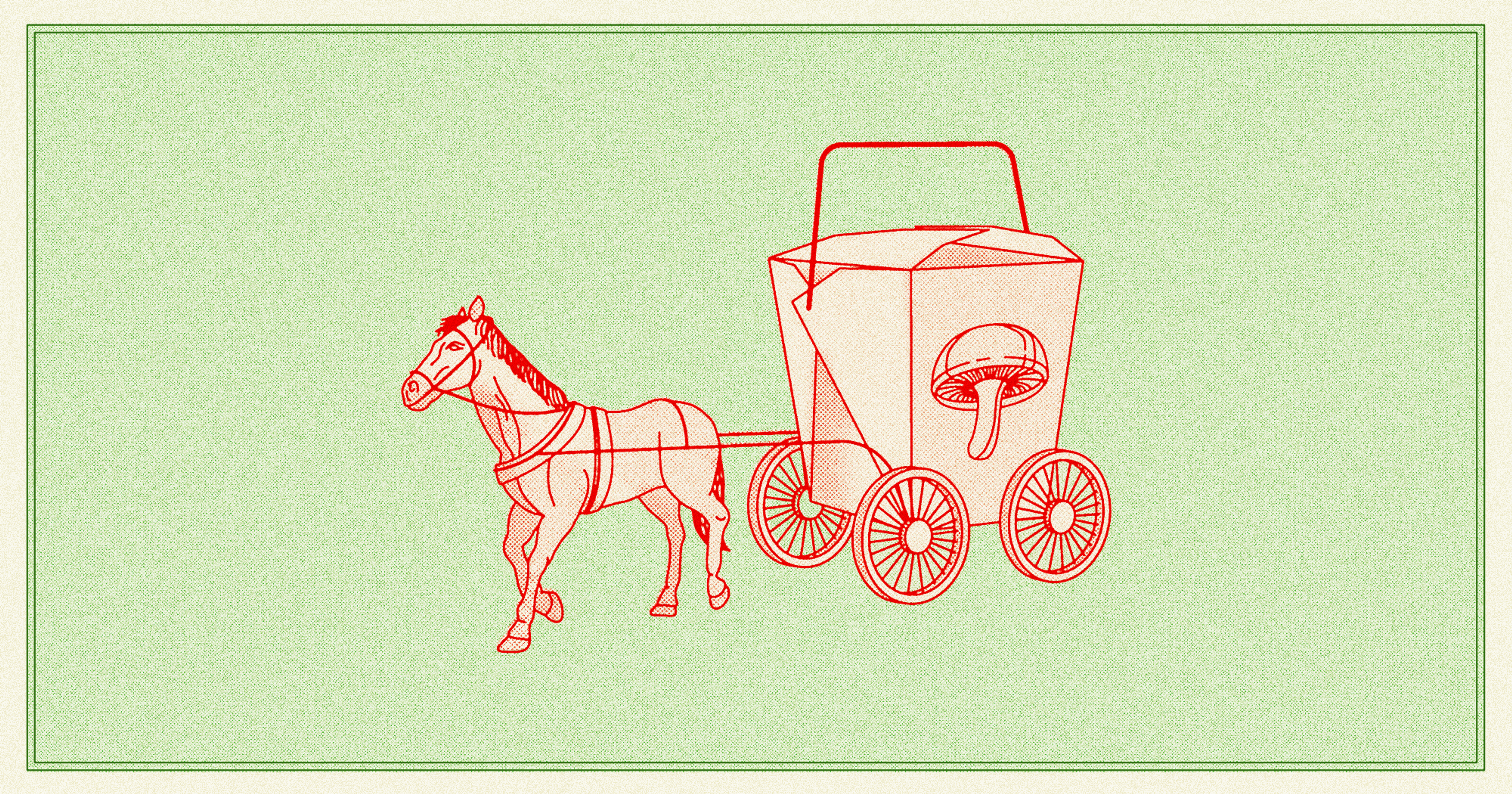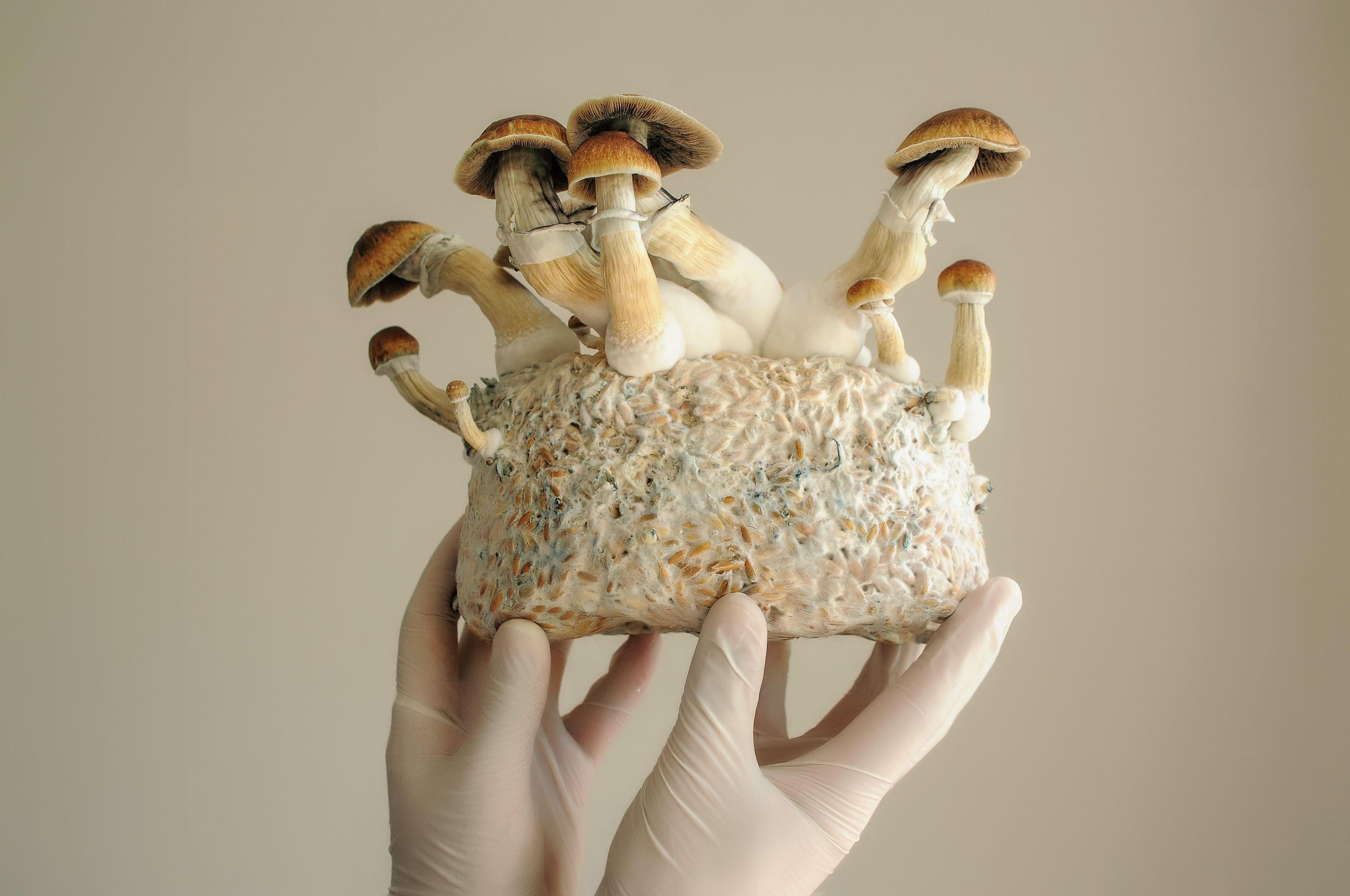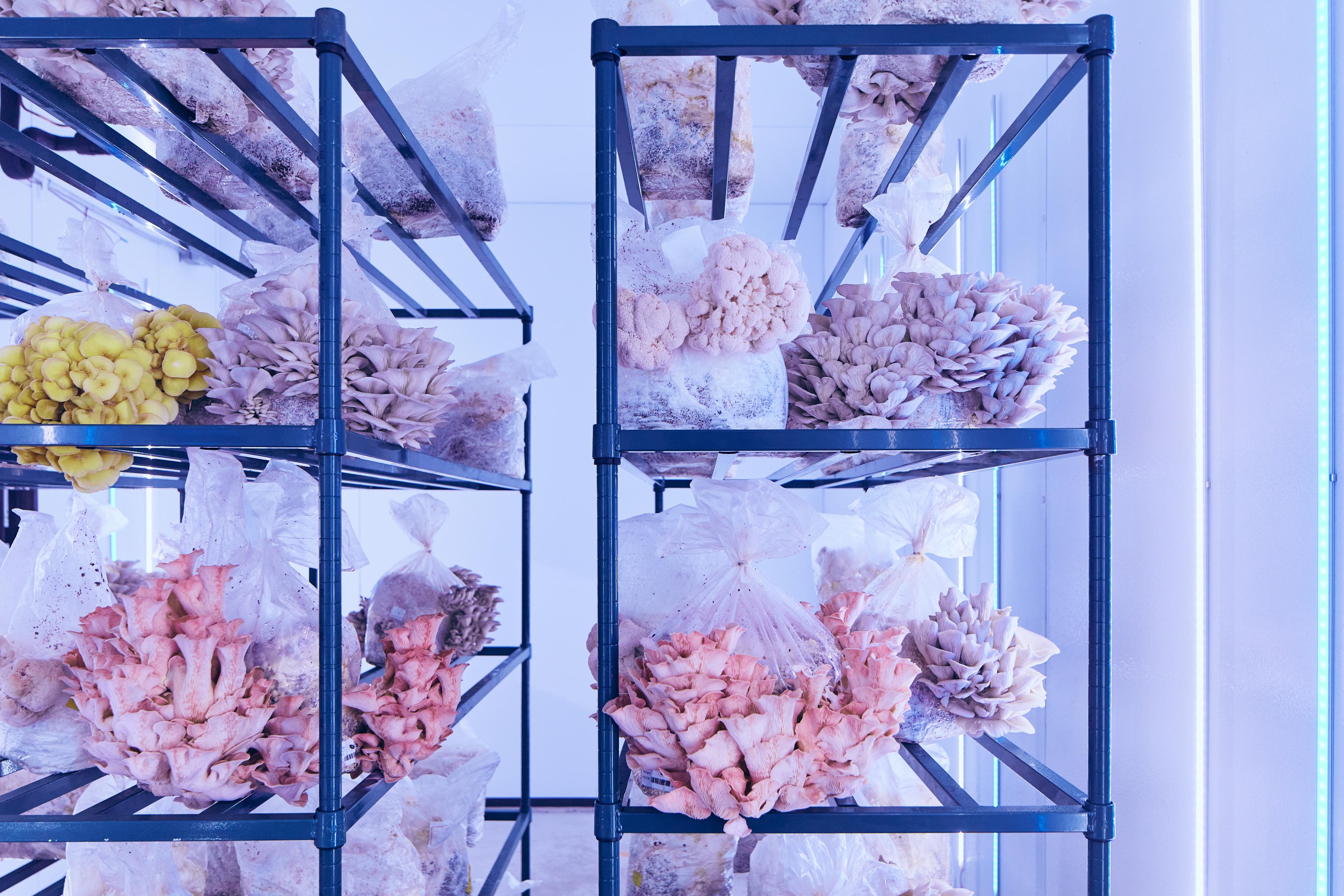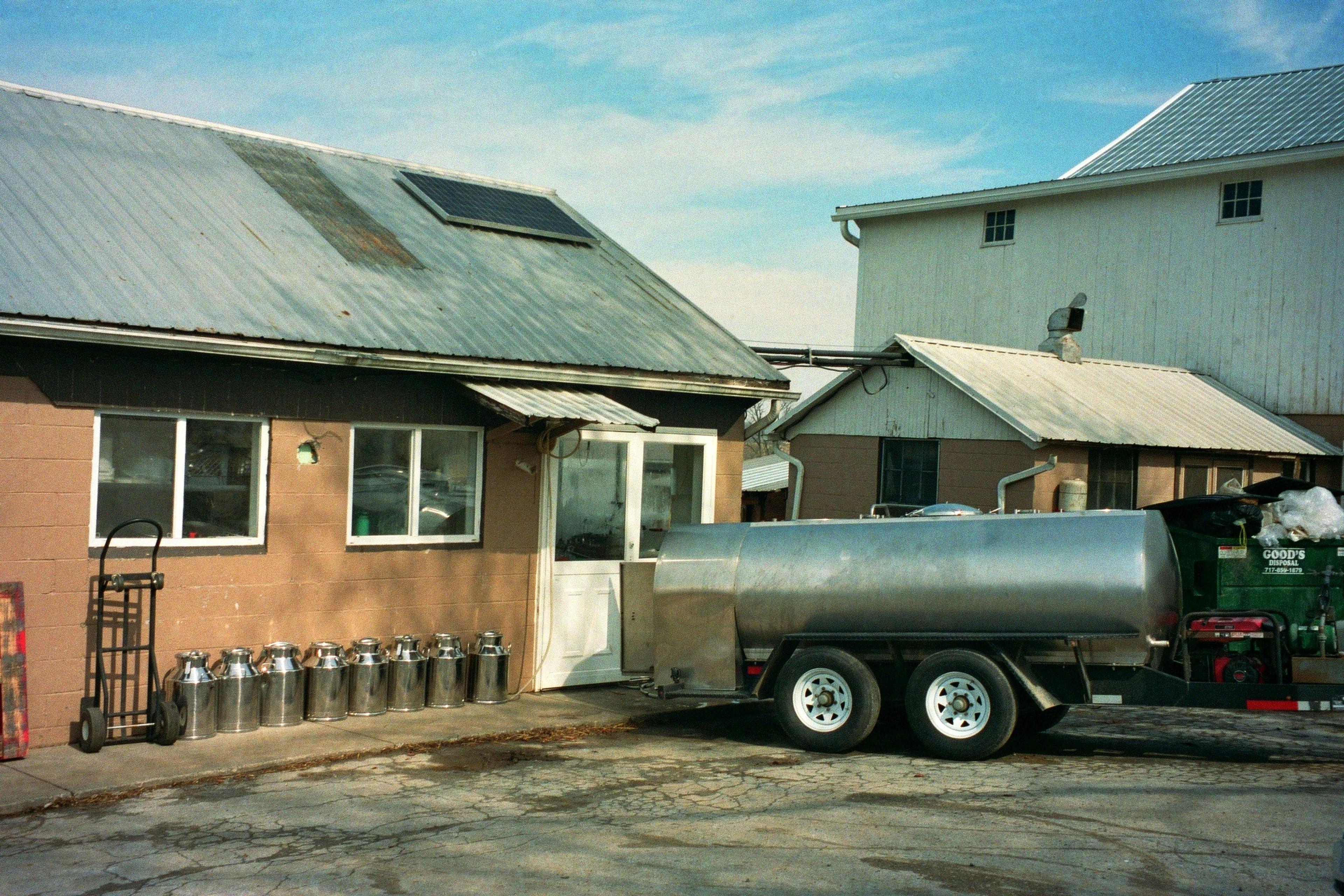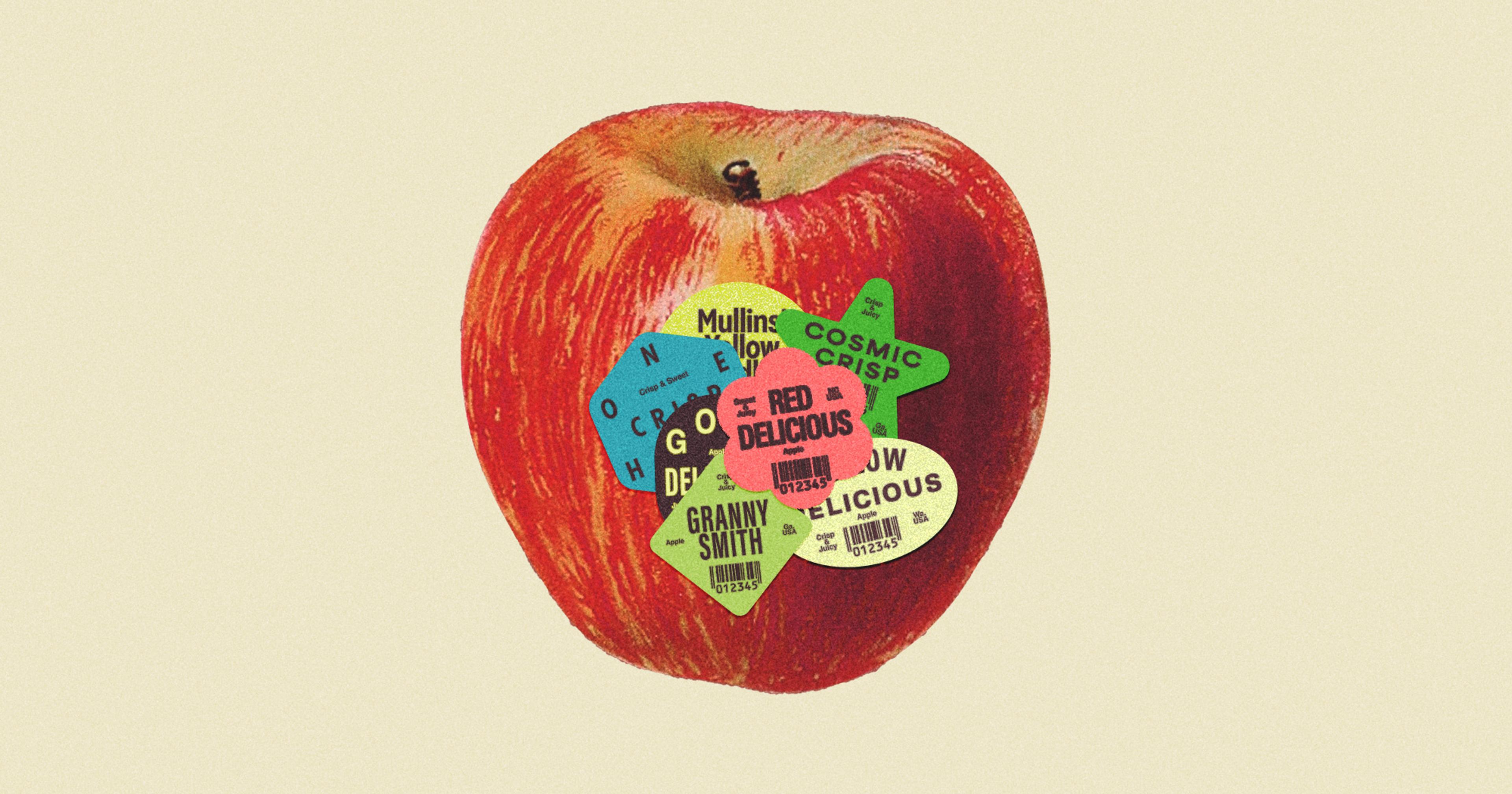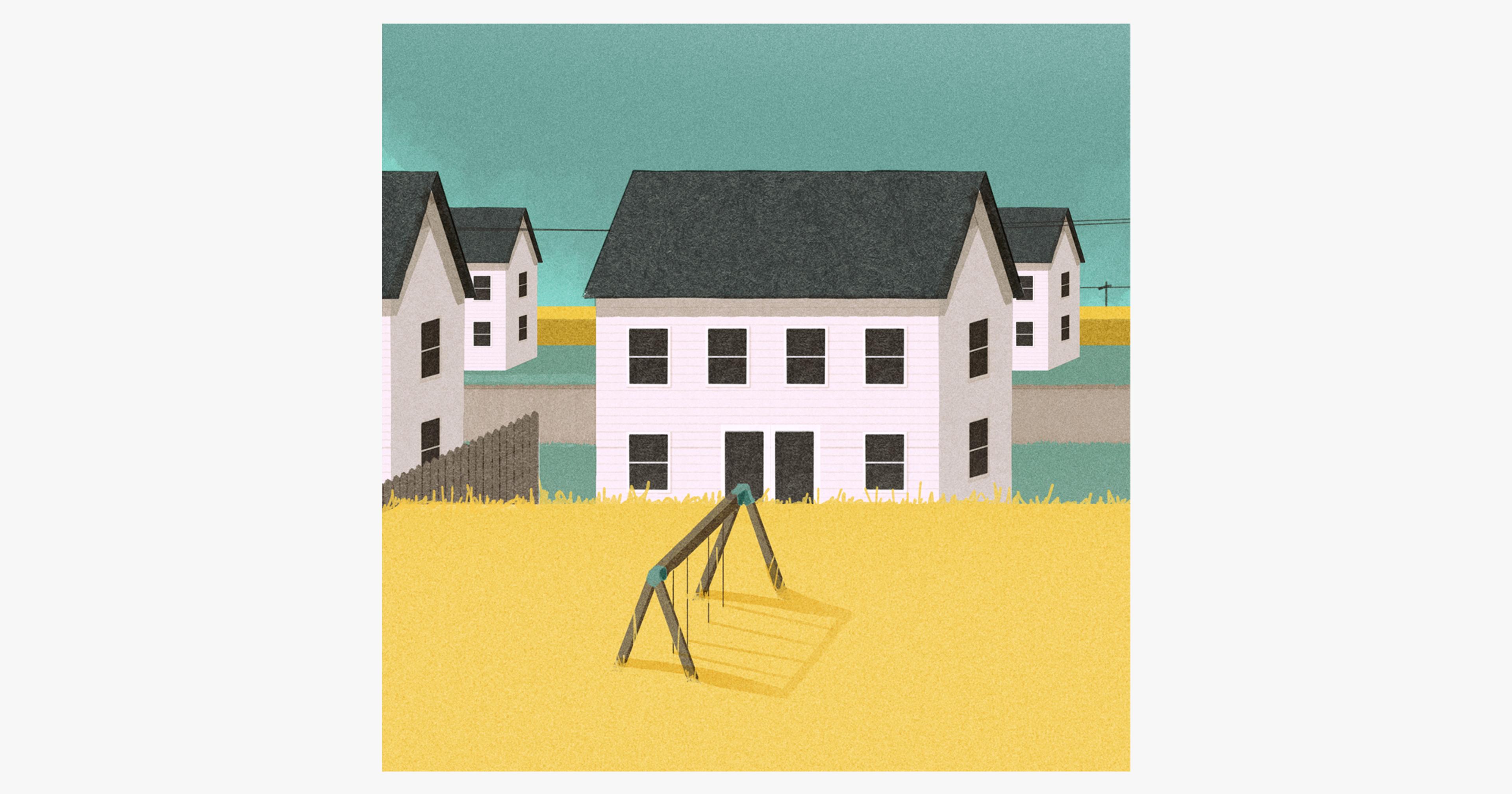Amish Agriculture’s promo material is in Chinese. There’s a reason for that.
Much has been made of the underground mycelial network in forests, superhighways of tiny fungi filaments connecting plants and trees, a shared economy benefitting all the intertwined organisms.
But fungi networks are facilitating human connections, too. Leo Lin, the quality manager of Amish Agriculture in Waterloo, New York, shuttles between cultures. He drives out to the Romulus Amish community in New York’s Finger Lakes region to meet with farmer Sam Peachey, who grows shiitake mushrooms. And he works with his brother, Chinese businessman Mark Lin in New York, and Mid-Atlantic celebrity chef Peter Chang, to bring Peachey’s mushrooms to a largely Chinese audience.
“There’s room for expansion and people interested in going into it,” Peachey said by phone — Leo’s, not his own, because he doesn’t do phones, computers, and most other modern technologies.
Leo Lin facilitates communication, but Peachey knew his brother Mark, former owner of Finger Lakes Tea Company, from New York’s Upstate agriculture scene. Both of their communities prioritized family-owned businesses and regional foods in similar ways, working multiple revenue streams and spitballing new ideas as a hedge against tight margins and shifting consumer tastes.
Mushrooms, especially shiitakes, aren’t historically an Amish thing. So Peachey has taken his mushroom dog and pony show on the road, proselytizing about the profitability of growing shiitakes to other Amish communities. In January, Peachey spoke at the 2024 Mid-Ohio Growers Meeting, an annual gathering of Amish farmers. Hundreds of buggies pulled up at the Mt. Hope Event Center in Millersburg, Ohio, the heart of the state’s Amish country.
“Sam has personally benefited from growing these mushrooms, and he wants to share the good news with others,” Mark Lin said through a translator. “There are different levels of openness in these [Amish] communities. We can’t go and talk to them ourselves, so we rely on Sam to bring the knowledge to others. Now six more communities have signed up to do shiitake mushrooms, in Wisconsin, New York, Pennsylvania, and Ohio.”
A business idea born of necessity and the pandemic, Amish Agriculture and its mushrooms are finding new fertile ground. The collaboration was rooted, as so many are, in urgency. But it flourished due to some high-tech assistance.
Peachey had been mostly an egg man, selling them alongside Amish food products weekly directly from his farm and at farmers’ markets in Manhattan and Brooklyn. The pandemic hit, people stopped knocking on his door to buy eggs, and the outdoor market business got wobbly.
Meanwhile Mark Lin and his network of friends and family were all out of eggs.
“We worked with him on his porch over a cup of coffee, often more than one.”
“I figured I’d call on my friend Sam Peachey,” Lin said. “I went and knocked on his door and he didn’t even know there was Covid going on. He said, ‘I have $100,000 in eggs. If I don’t sell them, I lose a lot of money.’” Lin zoomed into action on WeChat, the Chinese Facebook, helping Peachey sell all his eggs almost immediately in the Chinese community.
First eggs. Next, what? Before the pandemic, Peachey had noticed a fresh mushroom vendor who always had a long line. When his egg business was struggling, Peachey kept thinking about that obvious demand for mushrooms — he decided to give it a shot. With the blessing of his community and the help of the Lin brothers, he launched Amish Agriculture, Inc. Lin believes it’s the first formal Amish-Chinese business venture.
Peachey turned to agricultural experts at nearby Cornell University, consulting with vegetable specialist Judson Reid with the Cornell Vegetable Program and Judy Wright, senior agriculture economic specialist at Cornell Cooperative Extension. He built two long, narrow greenhouses on his property and bought spore-inoculated logs from China.
“We worked with him on his porch over a cup of coffee, often more than one,” Reid said. He helped Sam develop a vertical production system with four levels of racks that stand five feet high.
Because the greenhouses are heated with a coal stove and ventilation is not as precise as with a greenhouse with electricity, there are more peaks and valleys to a harvest schedule, Reid explained. “We can have more consistent fruiting of those logs over the course of a year, but there are fewer environmental controls given Sam’s relationship with technology,” he said.
On the Fourth of July in 2020, Lin visited Peachey with his friend Peter Chang, a James Beard award winner who owns more than a dozen restaurants mostly in Virginia and Maryland.
“This was very much like my childhood. I saw all these children running around barefoot with clothes full of patches and I felt this deep connection with them.”
“I was very moved,” Chang said through a translator. “I come from a rural background, I was a farm boy, and this was very much like my childhood. I saw all these children running around barefoot with clothes full of patches and I felt this deep connection with them.”
He bought a shiit-ton (sorry) of Peachey’s shiitakes. There were some funky-looking ones, sometimes twinsies or clusters that were harder to figure out how to use. At first, Chang made these ones into a sauce, a spin on an XO sauce, that he gave for free to regular customers. Customers raved and demanded more.
Peachey, Lin, and Chang turned back to Cornell for more guidance: putting together a business plan, finding a processing facility, figuring out food safety compliance, even nutritional labeling information. They are all now in the Chinese sauce business, together.
Since then, Peachey and his wife Naomi have visited Chang’s restaurants, both enjoying the Chinese food. They’re now thinking of expanding their business to oyster mushrooms and lion’s mane to feed the mania for premium mushrooms. And Lin sees other options for collaboration.
“Red and green jalapenos, turnips, Chinese cabbage,” he ticked off his wish list, but there are other interesting cultural touchpoints. “Sam was raising all these laying hens. When a laying hen gets old, most Americans don’t want old hens, so he sold them really cheap to a company making chicken broth. But Chinese people love old hen, there are so many recipes for old hen.”
Time will tell if shiitakes will pop up in many of the country’s Amish communities. But Peachey sees it as a path that makes sense. “Growing shiitakes fits into Amish and Mennonite communities with larger families,” he said. “It’s labor-intensive because everything must be picked by hand. But picking mushrooms is not a hard job and it’s a great opportunity for kids, who just need some supervision.”

